What's New
Displaying results 1451 - 1460 of 4052
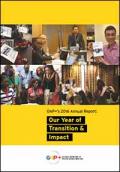
Resource | Publications,
In 2016, GNP+ worked diligently to reinvigorate our activist voice and expand our partnerships and programming, while continuing our core capacity building work with PLHIV and key population networks around the world. The highlight of the year, undoubtedly, was our successful 2016 Positive LIVING Leadership Summit which brought together over 270 people living with HIV from 78 countries to engage in two days of intensive discussion, sharing, learning, celebrating and strategizing prior to the 2016 International AIDS conference in Durban. The participants in the Summit forged new partnerships, strengthened old and existing relationships and are now embarking on ambitious advocacy initiatives to address stigma and discrimination and fight for universal access to treatment, care and prevention initiatives for and led by people living with HIV.
Although we remain a small organization, we endeavor to make a large impact in our collective fight to ensure the rights, health, safety and wellness of people living with HIV and empower members of our communities to strengthen their representation and voice in local, national and international policy and programmatic arenas.
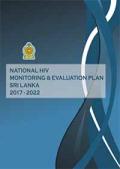
Resource | Publications,
In early 2013, the National HIV Monitoring and Evaluation Plan 2013-2017 was developed to compliment the National HIV Strategic Plan (NSP) 2013-2017, and guide the implementation of the NSP’s Strategic Direction 3 – Strategic Information Management Systems. This document provides an updated M&E Plan for the 2016-2018 period, incorporating recommendations from the Mid-Term Review (MTR) of the NSP 2013-2017, and two in-depth Monitoring and Evaluation System Strengthening Assessments, one focused on the health sector HIV response and one focused on the multi-sectorial HIV response.
This document is for all M&E and program staff involved in the National HIV/STI response, including partners in other units of the Ministry of Health, and other Government line ministries. In addition, the document will be useful for national and international partners and funders of HIV/STI activities.

Resource | Publications,
HRP has been providing leadership on sexual and reproductive health and rights for over 40 years. Founded in 1972, we have a unique mandate within the United Nations (UN) system to lead research and to build research capacity for improving sexual and reproductive health and rights through generating high-quality evidence.
HRP’s vision is the attainment of the highest possible level of sexual and reproductive health for every single person across the globe. We strive for a world where human rights that enable sexual and reproductive health are safeguarded, and where all people have access to quality sexual and reproductive health information and services.
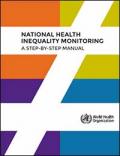
Resource | Tools,
Health inequality monitoring should be a central component of national health information systems. Surprisingly, however, national health information systems often neglect to capture within-country inequalities. Sometimes this can be addressed by more effectively communicating existing analyses and underlying disaggregated data to the appropriate target audiences.
This manual serves as a step-by-step practical reference to support countries in building capacity for integrating health inequality monitoring into their health information systems. It presents a range of World Health Organization tools and resources developed for measuring and reporting health inequality. As such, this manual aims to contribute to improved monitoring of health inequalities in countries, a practice that is essential to ensure accountability for the goals and targets of the United Nations 2030 Agenda for Sustainable Development.
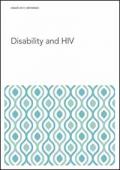
Resource | Publications,
This report highlights existing key evidence on the relationship between disability and HIV. It discusses the concrete steps needed for a person-centred, disability-inclusive HIV response that allows for increased participation of people with disabilities and integrates rehabilitation within the continuum of HIV care.
While the Millennium Development Goals were silent on disability, the new Sustainable Development Goals feature a strong will to “leave no one behind”, including people with disabilities. Similarly, the United Nations Convention on the Rights of Persons with Disabilities (CRPD) (3) calls on state parties to ensure the rights of people with disabilities to participate and be included in all spheres of life, including specific articles relating to the right to access health services, including sexual and reproductive health, and rehabilitation services. CRPD also recognizes that "women and girls with disabilities are at greater risk" and need specific protection from negligence and violence.
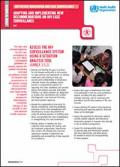
Resource | Publications,
The tools and recommendations for HIV case surveillance in the 2017 WHO Consolidated guidelines on person-centred HIV patient monitoring and case surveillance should be adopted and customized to fit the specific setting of each country and programme; most importantly, to support programme improvement, strengthen linkages in the cascade of care and optimize health outcomes.
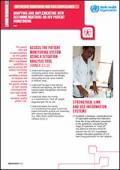
Resource | Publications,
The generic tools and recommendations for HIV patient monitoring in the WHO Consolidated guidelines on person-centred HIV patient monitoring and case surveillance should be adopted and customized to fit the specific setting of each country and programme; most importantly, to provide essential, quality patient care.
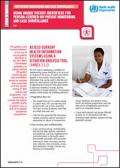
Resource | Publications,
The guidance and recommendations on the use of unique patient identifiers in the 2017 WHO Consolidated guidelines on person-centred HIV patient monitoring and case surveillance should be adopted and customized to fit the specific setting of each country and programme; most importantly, to provide the highest possible quality of patient care, as well as to support programme management.
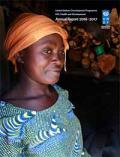
Resource | Publications,
Planetary health, including human health, is core to sustainable development. SDG 3 and other health-related targets seek to ensure health and well-being for all, at all ages, including in humanitarian and fragile contexts. Virtually all development challenges of the 21st century have the potential to profoundly affect health—including climate change, fragility and conflict within and between countries, economic and social disparities within countries, urbanization and the growing “youth bulge.” Progress on many SDGs will only be possible by ensuring that policy and programming responses include efforts to address health.
In 2016, UNDP released a corporate strategy, titled “The HIV, Health and Development Strategy 2016–2021: Connecting the Dots,” which is fully aligned with the 2030 Agenda and contributes to UNDP’s vision of eradicating poverty and reducing inequalities and exclusion.

Resource | Publications,
The 2016-2017 Annual Report on UNDP’s partnership with the Global Fund --- and its health implementation programmes funded by other sources --- highlights the achievements and partnerships in responding to HIV, TB, malaria, and health more broadly. UNDP supports countries to implement large-scale health programmes—including reaching some of the most hard-to-reach populations and strengthening institutions to deliver essential services in challenging and high-risk country contexts. The partnership with the Global Fund has helped save 2.5 million lives and the health implementation work has grown to US$520 million in expenditure per year (2016) including all sources of funds, making a powerful contribution to Agenda 2030 and the commitment to ‘leave no one behind’.





